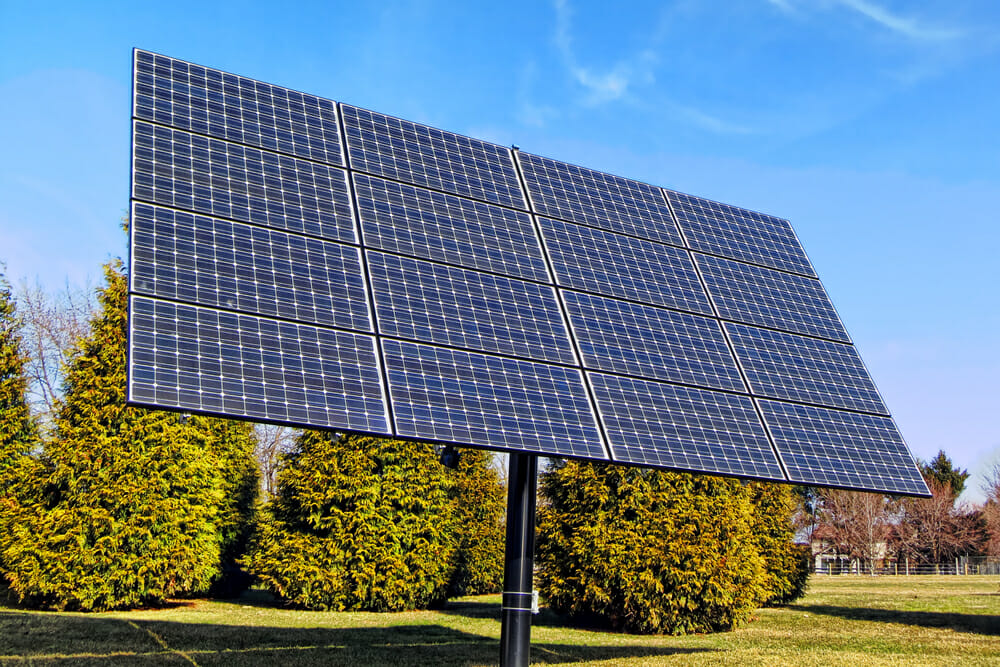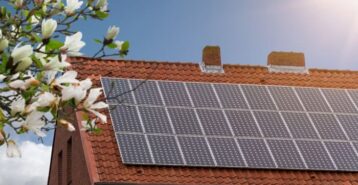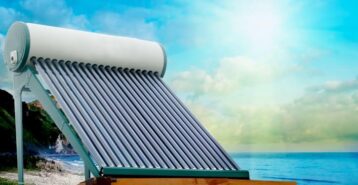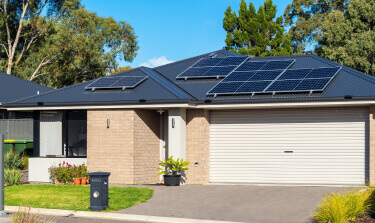Choosing the Right Solar Panel Mounts for Your Home
Solar panel mounts are the racks or frames that secure your panels in place, keeping them stable and working efficiently. These mounts are usually lightweight and adjustable, allowing panels to tilt for maximum sun exposure. They can be installed in various areas on your property and are built to handle strong winds and harsh weather. To find the best setup for your home, it’s a good idea to consult with a local solar installer who can recommend the right solar panel mounts for your space and climate.
Solar Panel Mounting Options
Homeowners have three types of solar panel mounting options, each designed to support different installation needs. The most common types of mounts include:
- Roof mounts: The most popular choice, installed directly on your roof
- Ground mounts: Set up on open land with plenty of space
- Pole mounts: Panels are attached to a single elevated pole
Each mount type has its own pros and cons depending on your home’s layout, space, and energy goals.
1. Ground Mounts
Ground mounts are sturdy frames that anchor directly into the ground on your property to support solar panels. Each mount is built to hold a certain number of panels, depending on the frame design.
Many ground mounts are fixed, holding the panels at one set angle throughout the year. This, however, can limit efficiency during certain seasons. Some models offer adjustable angles, allowing you to tilt the panels for better sun exposure year-round, which can also help improve your solar sun number score.

Benefits of Ground Mounts for Solar Panels
If you have plenty of open land and minimal shade from trees, ground mounts can be a cost-effective way to install solar panels. One major perk is easy access. Cleaning and maintenance are much simpler than on a roof. You also avoid the risk of damaging your roof or causing leaks during installation.
Potential Drawbacks of Solar Panel Ground Mounts
Before choosing a ground mount, check with your local code enforcement office. Some towns and cities restrict or prohibit them. It’s also important to consider your soil conditions. Loose or sandy soil may need to be compacted or reinforced before solar installation.
2. Pole Mounts
Pole mounts are strong, elevated frames designed to support multiple solar panels on a single vertical pole. A well-installed pole can hold a surprising number of panels, sometimes up to 16, making it a space-saving option for homeowners.
Benefits of Pole Mounts for Solar Panels
One big advantage of pole mounts is that they take up less space than ground-mounted systems. Think of it like installing a basketball hoop in your yard. It’s much more compact than a full solar frame spread across the lawn. Pole mounts lift panels about six feet or more off the ground, giving you usable space underneath.
Pole mounts also protect your roof from wear and tear and eliminate the need to work at heights. They’re ideal for areas where trees or buildings could cause shading at lower levels.
Many pole mount systems include tracking features, allowing panels to swivel and tilt with the sun throughout the day. This sun-tracking ability helps maximize solar output and overall system efficiency.
Potential Drawbacks of Solar Panel Pole Mounts
While pole mounts are space-saving and efficient, they typically cost more to install due to the need for strong foundations and additional hardware. Their height can also make cleaning and maintenance a bit more challenging without proper equipment. And like ground mounts, local building codes or zoning rules may limit or restrict their use. It’s essential to check with your local permitting office before moving forward.
3. Roof Mounts
Roof mounts are the most common type of solar panel mounts used today. They’re popular with homeowners because they keep panels off the ground and out of the yard, while taking advantage of the roof’s sun exposure, often the best spot for solar production.

Some roof mount systems are installed beneath your roofing materials, making it easier to remove or replace panels later without disrupting the roof itself. These mounts are similar to how a skylight is installed, with flashing used to maintain a watertight seal. Most roof systems are flush-mounted, with panels sitting close to the roofline, although some designs include supports installed beneath the roofing or siding for added structure.
Benefits of Roof Mounts for Solar Panels
Roof mounts are generally more affordable because they use the existing slope of your roof for optimal sun exposure. Their low-profile design helps maintain your yard space and reduces the need for extra materials or land use.
Potential Drawbacks of Roof Mounts
While the mounts themselves are cost-effective, installation can be more expensive. Working on a roof requires more time, care, and safety precautions, especially when avoiding damage to existing shingles or tiles. Although roof mounts are efficient and space-saving, the added labor and roof access challenges can increase overall installation costs compared to ground or pole mounts.
Solar Panel Mount Sizes
When choosing solar panel mounts, think beyond your current setup. While a smaller mount system might cost less upfront, it may limit your ability to expand later. If there’s a chance you’ll want to increase your solar panel count in the future, it’s often smarter and more cost-effective to go with a larger mount now.
For example, a mount that holds eight panels typically costs less than installing two separate mounts for four panels each. Planning ahead can save you both time and money down the road.
Permits for Solar Panel Mount Installations
In most cases, you’ll need a permit before installing solar panel mounts, especially if they’re ground or pole mounted. If you’re building your own mount, it must be approved by a licensed civil engineer to confirm it meets safety standards. That approval can cost up to $500, so it’s important to factor that into your budget. Always check with your local building department to understand what’s required in your area.
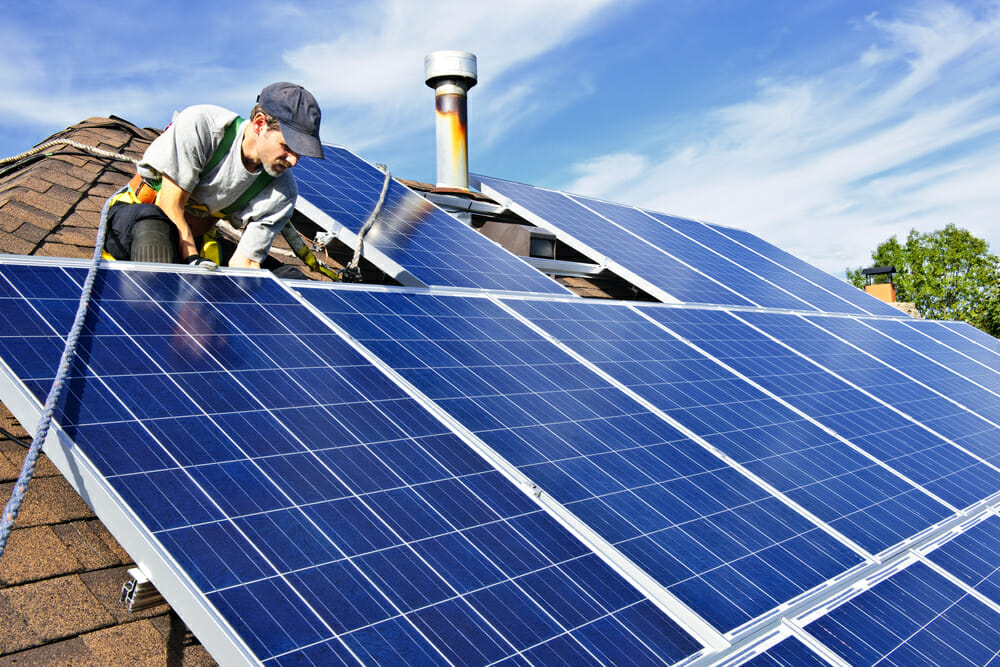
Solar Panel Mount Costs
Solar panel mounts are a significant part of your solar installation budget. They provide essential structural support and play a key role in system performance. Costs vary depending on the type of mount, complexity of installation, and whether you add solar tracking.
Average Costs by Mount Type
- Roof Mounts: Typically the most affordable option, roof mounts cost between $0.10 and $0.50 per watt. For a 6 kW system, expect to pay around $600 to $3,000.
- Ground Mounts: These require more materials and labor and typically range from $0.50 to $1.00 per watt, or $3,000 to $6,000 for a 6 kW system.
- Pole Mounts: A more specialized option, pole-mounted systems cost $1.00 to $2.00 per watt, totaling $6,000 to $12,000 for a 6 kW setup.
Solar Tracking Systems
Solar trackers can boost your system’s efficiency by following the sun throughout the day. Here’s what you can expect to pay:
- Single-Axis Trackers: These track the sun on one axis, increasing output by up to 35%. They add about $0.50 to $1.00 per watt to your system.
- Dual-Axis Trackers: These systems adjust both horizontally and vertically for maximum exposure. They can add $1.00 to $2.00 per watt to your cost but yield the highest energy gains.
While solar trackers improve performance, they also increase upfront cost and require more maintenance.
Installation Considerations
Installation pricing depends on your home’s layout and local requirements. For example:
- Complex or steep roofs can lead to higher labor costs.
- Ground and pole mounts may need trenching or concrete bases, adding to the final price.
- Always check local permitting rules—some installations require engineered approvals or city inspections.
Ready to explore the best solar mounting options for your home? Let us help connect you with a trusted local solar pro who can recommend the right setup for your space and budget.
Compare top-rated solar pros in your area.
Read real homeowner reviews, explore qualifications, and view promotions. Modernize makes it easy to browse professionals and find one that will be perfect for your project.
